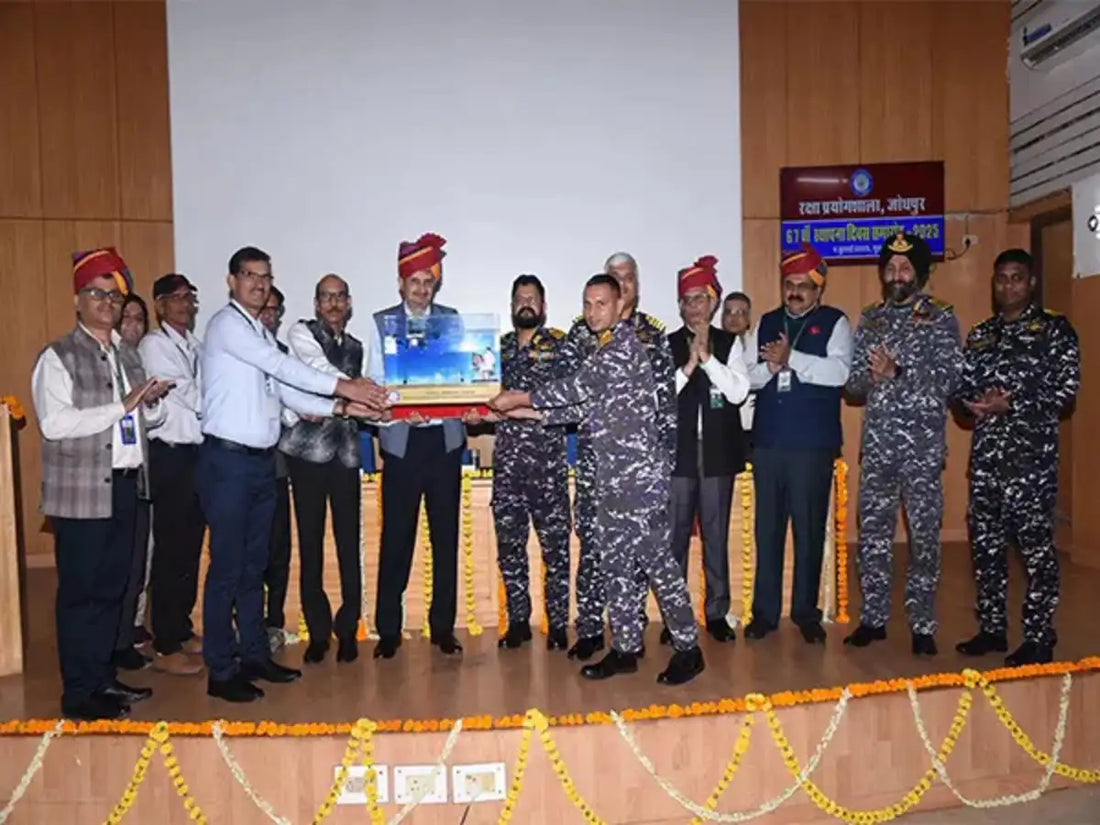DRDO Hands Over Six Indigenously Developed Systems to Indian Navy, Enhancing Self-Reliance

In a noteworthy step towards enhancing indigenous defense capabilities, the Defence Research and Development Organisation (DRDO) officially transferred six crucial systems to the Indian Navy. This handover took place during a ceremony at the Defence Laboratory in Jodhpur, emphasizing India's Aatmanirbhar Bharat initiative by developing these systems in accordance with the Naval Staff Qualitative Requirements (NSQR).
The systems were formally presented by Dr. Samir V Kamat, who serves as the Chairman of DRDO and Secretary of the Department of Defence R&D, to Rear Admiral Sriram Amur, the Assistant Chief of Naval Staff (SSP) at Naval Headquarters.
| List of Systems Handed Over to the Indian Navy |
|---|
| Gamma Radiation Aerial Surveillance System (GRASS) |
| Environmental Surveillance Vehicle (ESV) |
| Vehicle Radiological Contamination Monitoring System (VRCMS) |
| Underwater Gamma Radiation Monitoring System (UGRMS) |
| Dirt Extractor and Cross Contamination Monitor (DECCOM) |
| Organ Radioactivity Detection System (ORDS) |
These six systems, entirely conceptualized and developed by DRDO scientists within India, significantly enhance the Navy's ability to detect radiation and monitor environmental contamination, addressing nuclear safety across land, air, and underwater environments.
A DRDO official at the event commented on the systems, stating, "These cutting-edge systems represent our commitment to indigenization and are tailor-made to meet the evolving operational needs of the Indian Navy."
Radiation Safety Across Terrains
The suite of systems offers comprehensive monitoring capabilities:
- GRASS and ESV are purposed for airborne and terrestrial radiation surveillance, respectively.
- VRCMS and UGRMS are designed for ground-based and underwater radiological contamination assessments.
- DECCOM and ORDS help prevent cross-contamination and evaluate internal exposure to radioactivity in personnel or casualties.
Recent Success in Missile Technology
The handover follows DRDO's successful test of the indigenous Astra Beyond Visual Range Air-to-Air Missile (BVRAAM) from a Su-30MKI aircraft on June 11. The missile system, featuring an indigenous Radio Frequency (RF) seeker, achieved direct hits on high-speed aerial targets in two separate test launches, confirming its precision and reliability.
The Astra missile boasts a strike range of over 100 kilometers and includes a sophisticated guidance and navigation system. Its development involved a collaboration of more than 50 public and private sector firms, including Hindustan Aeronautics Limited (HAL).
Strengthening Naval and Aerial Defence
The integration of advanced radiation detection systems into the Indian Navy and the successful validation of indigenous missile technology for the Indian Air Force underscore India's ongoing commitment to self-reliance in critical defense sectors. These advancements in naval and aerial defense capabilities illustrate the country's growing proficiency in tackling complex security challenges through domestically developed solutions.



















